- Home
- Lauren Oliver
The Magnificent Monsters of Cedar Street
The Magnificent Monsters of Cedar Street Read online
Dedication
To Normandy Itzhak and West Lester:
For the Adventures ahead
And the Magic inside
And the Love everywhere
Contents
Cover
Title Page
Dedication
Chapter 1
Chapter 2
Chapter 3
Chapter 4
Chapter 5
Chapter 6
Chapter 7
Chapter 8
Chapter 9
Chapter 10
Chapter 11
Chapter 12
Chapter 13
Chapter 14
Chapter 15
Chapter 16
Chapter 17
Chapter 18
Chapter 19
Chapter 20
Chapter 21
Chapter 22
Chapter 23
Chapter 24
Chapter 25
Chapter 26
Chapter 27
Chapter 28
Chapter 29
Chapter 30
Chapter 31
Chapter 32
Chapter 33
Chapter 34
Chapter 35
About the Author
Books by Lauren Oliver
Copyright
About the Publisher
A SHORT GUIDE TO THE MONSTERS REFERENCED IN THIS BOOK,
EXCERPTED FROM
A GUIDE TO MONSTERS AND THEIR HABITS,
BY ELIZABETH CLAY
Alicanti (sing. Alicanto). The alicanti, or Aeriol complainus, are closely related to harpies, and may have evolved from the same prehistoric ancestor. The Aeriol complainus are known for their piercing shrieks, loud enough to pierce an eardrum, likely due to their preferred mountainous habitats, which require the mating alicanti to call for mates across vast swaths of distance.
Atlantic Firr (sing. same). Like the sloth, to whom they are closely related, the Atlantic Firr are sweet, slow-moving herbivores, although they have been known to eat insects for dessert or on special occasions. Known for a ferocious scowl that long made them an object of fear, the Atlantic Firr are actually quite easy-going. The directional pull of their wide, nearly toothless mouths is an expression of biological and not temperamental traits: due to years of sipping nectar and moisture from canopy leaves, their mouths are simply pulled into permanent frowns. Though once found across a wide range of habitats, from the jungles of the southern hemisphere to the rangy woods of Northern Europe, during the Middle Ages the Atlantic Firr were hunted to near extinction, when it was thought that consumption of their kidneys would keep a person safe from the plague. In fact, it is the Atlantic Firr’s salivary glands that produce chemical compounds nearly indistinguishable from today’s strongest antibiotics.
Baku (sing. same). The baku are an unusual variety of feathered mammal, once uniquely found in tropical regions. Due to their legendary sweet tooth, the baku’s habitats grew more diverse as a result of the explosion of the sugar trade, and the ships that often inadvertently carried stowaway baku in the cargo hold as they navigated the world. They are loosely related to a particular variety of Amazonian spiny tree rat, which likely resulted in the feathering that serves as camouflage when they are roosting—or hunting—high in the tree canopy.
Bogeys. Like the specter, the bogey cannot actually fly but only coasts on air currents, scanning for prey. Some have suggested a connection between the two, but this has been impossible to verify, given the difficulty of collecting meaningful living or fossilized specimens of either. It is likely, however, that bogeys are related more closely to succubi—their nourishment comes from a form of parasitic attachment that requires epidermal (skin-to-skin) contact, much like the succubi’s. It is worth noting, however, that bogeys do have a standard shape, although their biology is spread so thinly across a vast surface area that they are rendered translucent and nearly invisible to the naked eye. Given its lack of eyes, ears, mouths, or appendages, the bogey’s sensory apparatus was for years a mystery. Early nineteenth-century research, however, discovered that bogeys excrete a slimy, sticky substance from all over their bodies, with which they bond to host creatures, leave tracks for other bogeys, and perhaps attract their mates. Their Latin name, Mattahorn salivus, roughly means “drooling Mattahorn,” and comes from that of the unfortunate scientist who discovered this feature by volunteering as host for a bogey.
Bullieheads have the head of an ox and a small, burly build like that of a bulldog; they are herbivores and quite shy. They are herd animals closely related to the Capra aegagrus hircus, or domesticated goat, and do very badly when separated from the pack.
Carbuncles. So-named because of a stippled, knobby hide that resembles the painful dermatological condition, the skin of the modern carbuncle is a deliberate evolutionary adaptation in response to a shrinking habitat. The hide of an adult carbuncle is actually one enormous, striated callus, made as a result of long and painful exposure to volcanic or mountainous elements. Much like tree rings, the fine layers of a carbuncle’s hide may be separated and counted as a decent estimate of age. Ranging from just a few ounces to the size of a small raccoon, the carbuncles are often mistaken for rocks—until they shriek, show their teeth, or blink one of their dozens of heavy-lidded eyes.
Chupacabras. Variously described as resembling a dog or a large, scaled reptilian creature, the chupacabra has characteristics of both. It is indeed a carnivorous reptile, descended from a prehistoric genus of reptiles known as pareiasaurs, roughly the size of a large wolf. It is thought that chupacabras may have emerged as a distinct species due to a catastrophic environmental change, which might have also necessitated their move away from an herbivorous diet. Although associated in popular imagination with drinking blood, especially that of livestock, chupacabras are primarily scavengers. Because drought, however, is the chupacabra’s primary source of environmental stress, Monsterologists have previously observed mixed communities of chupacabras and zuppies, a cooperative relationship due to the zuppies’ ability to go without water. It is theorized, then, that chupacabras drink blood either for the limited hydration it provides or, more interestingly, to collect it for the zuppies in their pack, as zuppy teeth are too small to penetrate an animal hide.
Cockatrices. Described in mythology as an aberrant winged monster with a dragon’s tail and the head of a rooster. Advances in paleontology have discovered the quite obvious connection between the modern cockatrice and its ancient ancestor, the pterodactyl. Like other members of the order Pterosauria, cockatrices are flying reptiles, and have close relatives in various species of flying gecko.
Diggles are small, sociable, and do better in “stands” of three or four members. Covered in scales made of a ridged calcite, they are extremely sharp to the touch and look, superficially, rather like English roses, but with razor blades instead of petals. They molt their skins annually by exploding, and may be softened through regular application of warm milk-baths. Despite being terrible swimmers, they have relatives in the Paracentrotus lividus, or sea urchin, species.
Dragons. Almost innumerable species of dragon once existed, and there are still likely undiscovered species living in remote and jungle areas. Direct descendants of pterodactyls, dragons originally evolved in underground caves, likely as a result of an environmental or atmospheric disaster that wiped out most other dinosaur species. It is the retreat to subterranean caverns that is responsible for their definitive trait: fire-breathing. In the absence of oxygen, dragons became selectively aerobic, meaning that they do not require oxygen to live, and can instead metabolize other gases, like methane, commonly released by bacterial
growth and hot springs underground. In the presence of oxygen, however, the methane in their metabolic tracts becomes an agent of combustion. When the dragon breathes fire, he is actually regurgitating gas; the motion of the dragon’s highly textured tongue adds just enough friction to generate a spark.
Dungaroos are so-named likely because of their resemblance to miniature kangaroos. This is a classic example of taxonomic confusion, related to the early naturalists’ habit of using recognizable and physically obvious traits to classify species, often erroneously. Dungaroos are in fact amphibious creatures and are related closely to the Lithobates catesbeianus, or bullfrog. Full-grown dungaroos reach thirty-five pounds on average, much of their weight concentrated in the musculature of an enormously powerful set of hind legs, which allow them to spring more than eight feet in any direction. Dungaroos have a peculiar method of ensuring gender equality: after gestation, the female lays two to three eggs directly in the “pouch” of the male, who will then hatch them over the course of thirty to forty-five days.
Fairies evolved around fifty million years ago from the very first species of flying bat. Although often imagined as tiny winged humans, the resemblance collapses up close. Their cranium (skull) is quite large, the rest of their facial features look much more feline, and their arms, legs, and hands—though elongated and hairless—show structural similarities to rodents. Importantly, they are a diurnal species—and, in fact, famously early to bed and late to rise—an important distinction that no doubt pushed their evolution away from the many species of bat. This no doubt influenced their dietary evolution, too—fairies feed on plants and nectar, and often build communities close to human gardens. Although in legend they can converse fluently in our language, in reality they are only mimics—much like certain species of parakeet, the advantage is in bond formation with the humans whose gardens and communities they have long depended on.
Filches are amphibious in nature, with tapered snouts, coarse fur, and an anatomy similar to that of a chimpanzee, to which they are closely related. They are, however, swamp creatures, and eat a varied diet of mud, grubs, and small fish, which gives them a famously identifiable stink. While known for “farting” regularly, these regular expulsions of gas are actually an important feature not of the filches’ digestive tract, but of its sensory mechanisms. Filches have poor eyesight and only decent hearing, but excellent depth perception and incredible mobility as a result. Recent studies have suggested they “see” in part by expulsions of gas particles, whose particular passage into space, or onto obstructing objects, is then detected through scenting.
Gnomes are not a singular species, but a genus, Ignomia, which includes more than forty different species and exists almost everywhere in the world. Their evolutionary divergence from other Hominoidea likely began roughly five million years ago, between the Mesozoic and Cenozoic eras. Ironically, despite a population of gnomes thought to number one billion globally, we have almost no fossil or skeletal records to guide us. All species of gnomes are characterized by a great capacity for camouflage and are thought to cannibalize their dead as a sign of respect.
Goblins are, along with trolls, a member of the Homo order diverged from humans roughly one to two million years ago, and still capable, in some cases, of reproducing with them. It is a broad family designation that includes multiple species, some of them nearly identical to humans: the Cobalus viridi, Cobalus silva, and Cobalus urba are three such examples. In humans of mixed goblin ancestry, the traits that express vary from individual to individual, and may even skip generations. One interesting feature of all goblins that have historically mated with humans: the physical development of traditional goblin features, such as emotional states tied to changes in skin color, a unique “three-ring” dental structure, and the decorative warts long associated with beauty and health in goblin communities, rarely show before adolescence. It is thought that this is a defense against early abandonment or attack by their caretakers.
Gremlins are a single species of carnivorous marsupials distantly related to the family Dasyurida, and most closely to the species sarcophilis harrisii, or Tasmanian devil. Unlike their Tasmanian cousins, however, gremlins are enormously widespread, comprising more than two hundred breeds, each with distinctly different personal traits and physical characteristics. Among the more populous gremlin breeds are the burrowers, solitary scavengers who make their dens beneath the floorboards or between the walls of human homes; the leonines, known for their tawny facial hair and sharp, curved teeth; and the shrills, the smallest-known gremlin breed in the world. Roughly the size of a rose blossom, their custom of affixing crowns of mushrooms and leaves to the tops of their heads makes for excellent camouflage.
Growrks are thought to be a North American relative of the sub-Saharan rhinoceros, although the exact evolutionary connection is unclear, and some have argued that in fact growrks might instead be more closely related to muskrats. They bear a superficial resemblance to wolves, except for their legs, which are short and jointed, like those of an alligator, and their tails, which are controlled by a complicated diamond-matrix of musculature and cartilage, giving them enormous flexibility and incredible strength. Despite their appearance, domesticated species make for loving and loyal companions.
Hippogriffs. Described in early literature as having the head and wings of an eagle and the body of a horse, and represented in mythology as a four-legged creature with a vast wingspread, the hippogriff and hufflebottom, to whom they are closely related, likely share the same prehistoric origin: a large, feathered reptile that lived somewhere between the Paleozoic and Mesozoic eras, with two powerful hind legs and four functional wings. One pair of wings is believed to have gravitated down the shoulder blades over time, as a changing climate meant the hippogriffs no longer had to migrate south in wintertime. Modern hippogriffs, though quite rare, share a diet similar to North American deer and use their wings only to escape detection, avoid predators, and enact mating rituals.
Hufflebottoms are found exclusively in northern climates. Like bears, they hibernate for roughly six months; unlike bears, their period of hibernation occurs from April to October. Their enormous girth is ill-proportioned for the four jointed “flippers,” evolutionary proof of their original wings, that in combination with their hind legs allow for clumsy locomotion on dry land, and much faster and precise speeds over snow, ice, and swamps. The hufflebottom’s dietary staple is the common snail; its long snout is exquisitely well-suited to sniffing out hibernating snails in wintertime and prying, sucking, or dislodging them from their hideaways. The period just before hibernation is known to monsterologists as “the frenzy,” a period in which the males court the females with snail shells they have collected all winter long. The female selects a mate by gorging on his offering. This is important, as she will gestate her baby during hibernation and give birth immediately upon waking up. It is thought that this mechanism allows mothers to rid themselves of the excess weight that limits their mobility; baby hufflebottoms are extremely playful, inexhaustibly excited, and difficult to wrangle.
Lionfish are, despite their name, not fish at all, but amphibians related to the bullfrog, like their cousins, the dungaroos. Their designation likely comes from the appearance of a colorful “ruffle” that appears during mating season, or in times of fear or challenge. This, in combination with a powerful, sustained “roar”—actually the motion of their hind legs, vibrating to form an almost mechanical rhythm—may be responsible for the “lion” in their names. Like many modern frogs, lionfish hatch first in water and pass through developmental stages similar to the growth of tadpoles. The development occurs over a much longer period of time, however, resulting in an adolescent mixed state in which the ruffle often emerges a few weeks before the legs have begun to nub. In this state, they are slow and cumbersome swimmers, and vulnerable to being fished. This is likely how the misunderstanding of their true biology began.
Mordrum live deep underground, near thermal springs that allow t
he refreshing of fungal growth thought to be a part of their diet. Little is known about these subterranean creatures, and fossil/skeletal evidence has provided competing indications about their evolutionary origin, as they have prominent biological characteristics of both bats and snakes. The mordrum have no eyes and see by echolocation. A fascinating tubular appendage is filled with thousands of ropy scillia for powerful harmonic expression. The sound of a mordrum in distress, for example, is often confused for a baby crying; a mordrum announcing a new food source, however, sounds very much like music.
Phoenix birds. Once so plentiful that almost every early human civilization had similar records of these majestic birds, phoenixes are sadly thought now to number somewhere between 1,000 and 1,500 globally. Although phoenixes are capable of spontaneous regeneration through a poorly understood process of combustion—it is thought that the act of dying might trigger a powerful release of flammable chemical agents, and that the fire somehow reverses biological damage to—and even aging of—the bird’s cells. It was not until the early 1800s that it was observed that the biological process relies on the composition of the bird’s feathers; tragically, the loss of vast herds of phoenixes is due almost entirely to humans, who for centuries trapped and plucked the birds alive, believing (incorrectly) that their feathers had healing powers similar to those of their tears.
Pixies. Like their fairy cousins, pixies likely evolved from the first species of flying bats, roughly fifty to sixty-five million years ago. Unlike their fairy cousins, they are a nocturnal species, and are covered in a fine fur known as pixie-silk; they are, as a result, more widespread, and more capable of withstanding the cold. Famously, the two species loathe one another, and fossil evidence indicates historical wars between them that culled hundreds of thousands of individuals on both sides. Pixies, too, are dependent on humans, in that they are scavengers. But perhaps due to their furry bodies, and to facial features much closer to the common bat, pixies share an uneasy relationship to humans and have resisted domestication. This is perhaps why pixies are known for being such troublemakers. The passage from adolescence to adulthood is marked in pixie communities by the organization of an elaborate raid on a human home. Tasks may range from stealing individual socks from a sock drawer, to emptying milk bottles or hiding a pair of reading glasses.

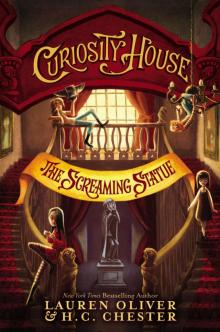 The Screaming Statue
The Screaming Statue Delirium
Delirium Before I Fall
Before I Fall Rooms
Rooms Replica
Replica Ringer
Ringer Pandemonium
Pandemonium The Shrunken Head
The Shrunken Head Panic
Panic Requiem
Requiem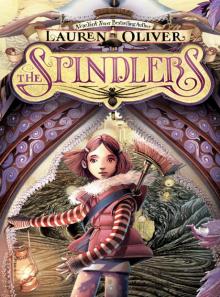 The Spindlers
The Spindlers Annabel
Annabel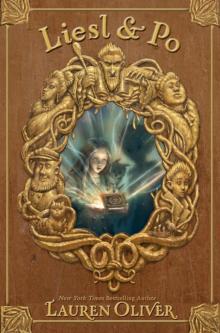 Liesl & Po
Liesl & Po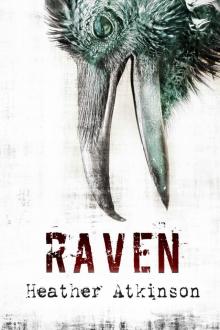 Raven
Raven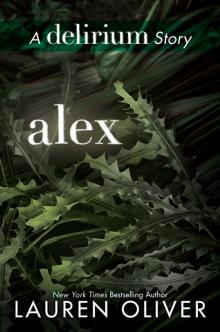 Alex
Alex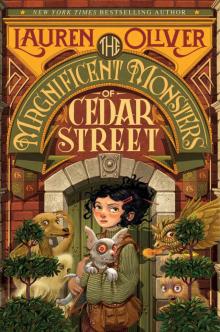 The Magnificent Monsters of Cedar Street
The Magnificent Monsters of Cedar Street Vanishing Girls
Vanishing Girls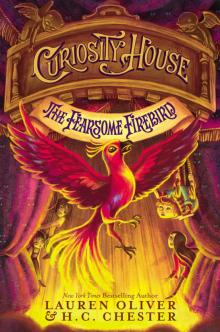 The Fearsome Firebird
The Fearsome Firebird Raven: A Delirium Short Story
Raven: A Delirium Short Story Annabel: A Delirium Short Story
Annabel: A Delirium Short Story Hana: A Delirium Short Story
Hana: A Delirium Short Story Broken Things
Broken Things Ringer (Replica)
Ringer (Replica) Alex (delirium)
Alex (delirium) Delirium dt-1
Delirium dt-1